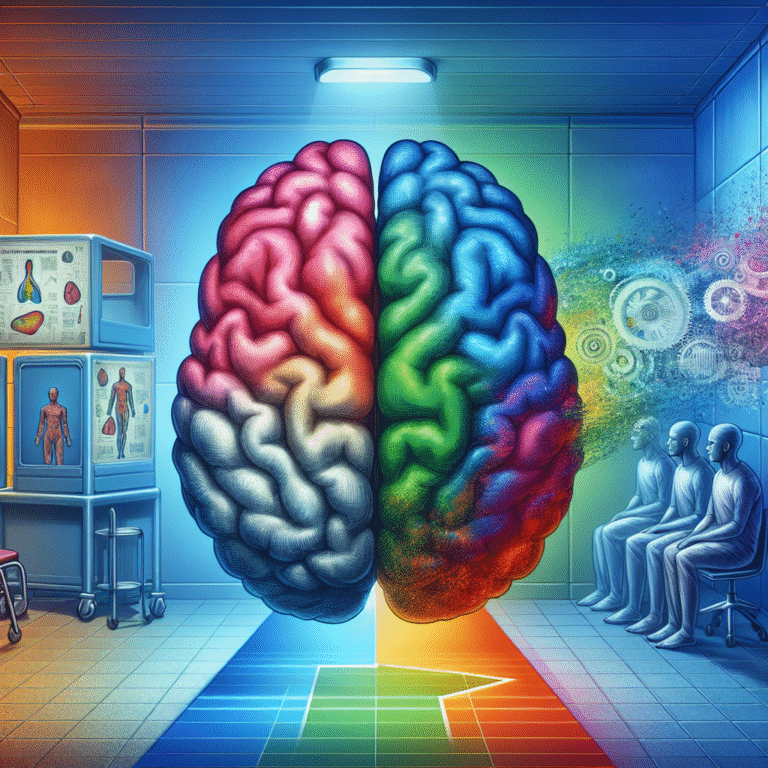
Introduction
In an age where innovation permeates every facet of our lives, the realm of rehabilitation is experiencing a groundbreaking transformation. Technology in Rehabilitation: How Virtual Programs Are Changing Lives serves not only as a revolutionary trend but also as a beacon of hope for countless individuals seeking recovery and restoration. As we delve deeper, we’ll explore how virtual programs are reshaping rehabilitation, bridging gaps in access, and offering personalized solutions that were once unimaginable.
Imagine attending physiotherapy sessions from the comfort of your home, engaging with physical therapists via real-time video consultations, or using immersive virtual reality environments to practice skills and exercises. This is no longer science fiction; it’s a burgeoning reality that’s rewriting the narrative of rehabilitation.
The Rise of Virtual Rehabilitation Programs
The integration of technology in rehabilitation has accelerated, especially in light of recent global events that have necessitated digital solutions. The COVID-19 pandemic served as a catalyst, forcing providers to explore virtual platforms. As a result, patients and clinicians alike have discovered the multifaceted benefits these technologies offer.
The Science Behind Virtual Rehabilitation
When we reference Technology in Rehabilitation: How Virtual Programs Are Changing Lives, it’s critical to understand the underlying scientific principles. The efficacy of virtual tools is rooted in several key areas:
Remote Access to Professionals: Patients can access specialists who are geographically distant, breaking down barriers associated with distance and mobility.
Real-Time Feedback and Monitoring: Therapists can monitor a patient’s progress via wearable technology, providing immediate analytical feedback that was previously unattainable.
- Adaptive Learning: Advanced algorithms can tailor exercises based on a patient’s performance, improving outcomes and boosting motivation.
Case Study: Teletherapy for PTSD
Consider Sarah, a military veteran struggling with PTSD. After years of traditional therapy with limited success, she engaged in a virtual therapy program designed specifically for trauma. Utilizing real-time video consultations, Sarah had face-to-face interactions with a licensed therapist while being able to remain in her safe space. The results? A drastic decline in her symptoms as she progressed through trauma-focused cognitive behavioral therapy via a platform tailored to her needs.
The Role of Virtual Reality in Physical Rehabilitation
Virtual Reality (VR) is another facet of Technology in Rehabilitation: How Virtual Programs Are Changing Lives. Utilizing immersive experiences, VR creates engaging environments where patients can practice movements and exercises, all under professional supervision.
Benefits of VR in Rehabilitation:
- Enhanced motivation due to immersive environments
- Safe practice conditions for patients recovering from injuries
- Reinforcement of muscle memory without the penalty of real-world consequences
Case Study: Stroke Recovery through VR
A hospital-based rehabilitation program integrated VR for stroke recovery. Patients engaged in games designed to practice hand-eye coordination and movement. For example, John, a stroke survivor, significantly improved his dexterity and movement range within weeks. The feedback loop generated from the VR environment allowed therapists to adjust tasks in real time, ensuring that John was constantly challenged without becoming overwhelmed.
| Patient | Condition | Improvement Percentage | Duration |
|---|---|---|---|
| Sarah | PTSD | 60% | 3 months |
| John | Stroke | 75% | 6 weeks |
Accessibility: Bridging the Gap
One of the most profound impacts of Technology in Rehabilitation: How Virtual Programs Are Changing Lives has been in enhancing accessibility for individuals across various demographics.
Breaking Geographic Barriers
Traditionally, many patients have faced challenges accessing specialized care due to prolonged travel and availability issues. Virtual programs extend exceptional rehabilitation services to rural and underserved urban areas, shattering these geographic boundaries.
Financial Implications
Besides physical access, financial constraints often prevent individuals from pursuing recovery. Virtual therapies generally present lower costs due to reduced overhead associated with brick-and-mortar facilities. Many insurance providers are beginning to recognize the effectiveness of virtual rehabilitation, paving the way for broader coverage.
Case Study: Access for Rural Residents
Residents in rural areas reported significant barriers to accessing rehabilitation services. With the implementation of virtual programs, one community saw a marked improvement. Mary, residing in a remote township, had been unable to attend follow-up appointments after her knee surgery. Remote rehabilitation allowed her to connect with specialists—resulting in a faster recovery and greater community awareness of virtual options available.
A Focus on Personalization
Personalized care is a cornerstone of effective rehabilitation, and technology is at the forefront of enabling this evolution.
The Role of Data Analytics
Technology in Rehabilitation: How Virtual Programs Are Changing Lives also pertains to data collection and analysis that allows therapists to create customized recovery plans. Wearable devices track physical activity, heart rates, and even movement patterns, informing therapists about a patient’s progress and required adjustments.
Tailored Virtual Programs
These insights lead to virtual programs that are specifically designed for the individual. For instance, a patient recovering from surgery may need different exercises compared to someone recovering from a traumatic injury.
Case Study: Custom Rehabilitation Programs
In one case, a virtual rehab platform analyzed user data to develop personalized recovery strategies for users recovering from various knee injuries. Tim, a competitive athlete, was provided with a tailored regimen incorporating strength-building exercises, flexibility training, and endurance workouts. Feedback from the program encouraged both Tim and his therapist to adapt strategies continually, ultimately enhancing his recovery success rate.
The Psychological Impact of Virtual Rehabilitation
Beyond physical healing, Technology in Rehabilitation: How Virtual Programs Are Changing Lives also addresses the psychological barriers many face during recovery.
Reduced Anxiety through Familiar Settings
Virtual programs allow patients to engage with rehabilitation professionals in an environment where they feel most comfortable—home. This reduces anxiety often associated with clinical settings.
Building Community through Virtual Support Groups
Many virtual rehabilitation programs also incorporate community aspects such as support groups. Patients connect with others undergoing similar experiences, fostering motivation and emotional support.
Case Study: Online Support Groups
An online platform introduced community forums for chronic pain patients. Individuals shared their experiences, coping mechanisms, and success stories. Emily, a participant, noted that hearing others’ journeys diminished her feelings of isolation and inspired her to persist with her rehabilitation exercises, spotlighting the role of community in fostering recovery.
Overcoming Challenges and Future Trends
While Technology in Rehabilitation: How Virtual Programs Are Changing Lives presents a plethora of opportunities, it also leads to challenges.
Technical Limitations
Not every patient has equal access to technology. While barriers are being broken down, there’s a continuous need for solutions catering to those with limited technological literacy or access.
Future Directions
Looking ahead, advancements like artificial intelligence and machine learning will continually enhance virtual rehabilitation programs. As technology becomes more intuitive and user-friendly, we can expect wider adoption across varied demographics.
Conclusion
Technology in Rehabilitation: How Virtual Programs Are Changing Lives embodies a transformative shift towards more accessible, personalized, and effective recovery solutions. We are witnessing a collaborative effort between technology and healthcare professionals that transcends geographic, financial, and psychological barriers.
As we close this discussion, consider how you can advocate for yourself or a loved one to explore the vast possibilities technology has to offer in rehabilitation. Seek virtual consultations, engage in community forums, and stay informed about new advancements. The future of recovery is not just about healing physically; it’s about empowerment and connection.
FAQs Section
1. Are virtual rehabilitation programs effective as traditional in-person sessions?
Yes, numerous studies have shown that virtual rehabilitation can be as effective, if not more so, in several scenarios. Tailored exercises and real-time feedback enhance success rates.
2. What technological tools are commonly used in virtual rehabilitation?
Common tools include video conferencing platforms, mobile applications, VR systems, and wearable technology that tracks progress.
3. Can anyone access virtual rehabilitation programs?
Generally, yes, but accessibility may vary based on specific technological requirements and services offered in different regions.
4. How do insurance companies handle virtual rehabilitation payments?
This varies by provider, but many insurers are increasingly recognizing the efficacy of virtual rehabilitation and expanding coverage for such services.
5. What can I do to prepare for my first virtual rehabilitation session?
Ensure you have a quiet space with a stable internet connection, familiarize yourself with any technology you’ll be using, and be ready to discuss your goals and any specific concerns you have with your therapist.
With the rise of virtual rehabilitation programs, the future looks promising for many on their journey to recovery. Embrace the possibilities that technology presents and remind yourself that healing is a continuous journey, enriched by the right tools and support.















